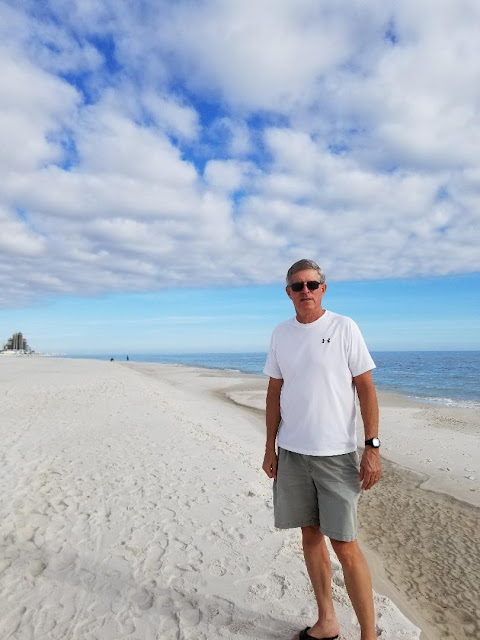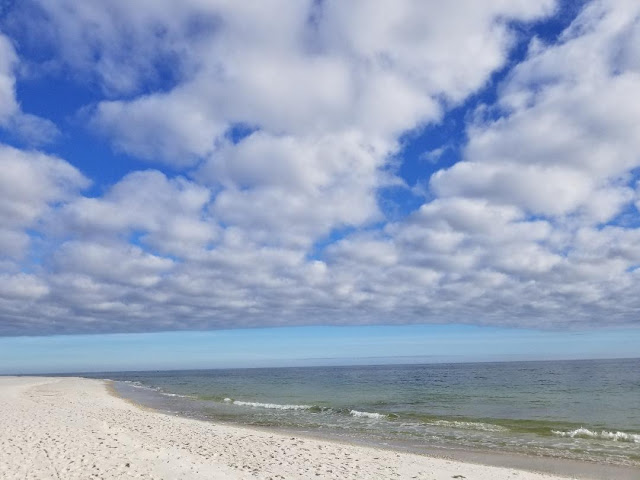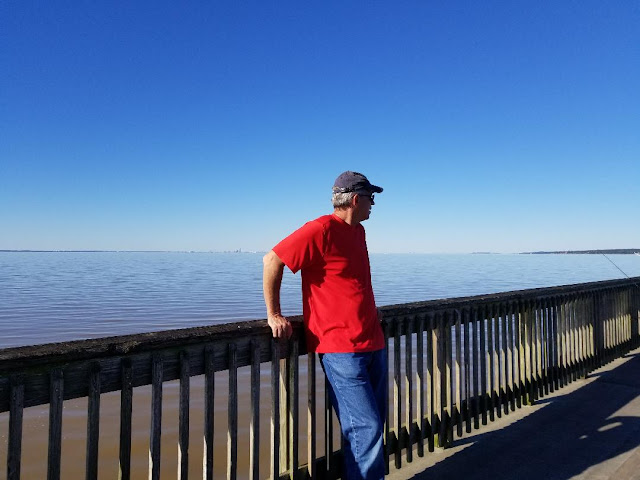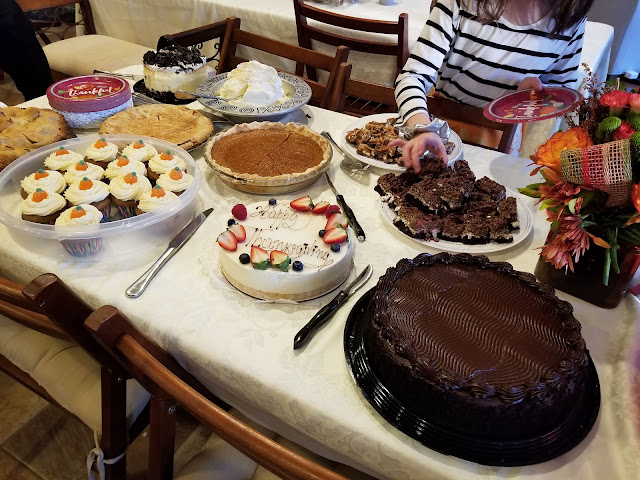 |
| The beach at Gulf Shores, Alabama in January |
Somehow, over the years, I have developed a prejudice against Alabama. I had never done anything but drive through it and had no first-hand experience of any kind as a base for my prejudice. But you have heard the stories that I have: This is the state where Rosa Parks was arrested for taking a front seat on a bus. This is the state where there were 3 bombings in 11 days in protest of the federal order to integrate schools. And four little girls were killed at church in one of those bombings. This is the state where "Bloody Sunday" happened and the march on Selma and where hate has been legal for years. This is a state where Martin Luther King was jailed and where the KKK still exists. It's no wonder I have had a bad impression of this state.
I wanted to give Alabama a chance. After all, they did elect Doug Jones over Roy Moore. But the day we drove into Alabama, I saw a garage door painted like a huge Confederate flag. That did not help. And it was cool and rainy for the first few days making us wonder why we were here.
But we are here to learn that there are beautiful things about Alabama and not everyone in the state is a racist. And when the sun is out it is beautiful. We are spending this month and next in Alabama because its half the cost of staying in Florida and there are aspects of Alabama that are very attractive-- mostly the warmth and the beaches.
We are parked in an RV park in Orange Beach which is next to Gulf Shores. Gulf Shores State Park is amazing. There are miles and miles of walking and biking trails that go in and around and over swamps and canals and marshes. There are miles of beach where there are no houses or hotels to be seen.
 |
Gulf Shores State Park has miles and miles of undeveloped beach front along the Gulf coast.
|
 |
| Sandpiper tracks in the white sand |
 |
| White crab on white sand |
 |
680 miles from Gulf Shores to Mexico
One day we drove to nearby Fairhope. We window-shopped in a quaint downtown. There is a large park, a fishing wharf, and lovely homes with amazing views of Mobile Bay.
|
 |
| Fairhope wharf |
 |
| This pelican wanted the raw chicken pieces this man was using for bait. |

| He followed him around like a puppy. |
|
|
 |
| The city park in Fairhope, Alabama next to Mobile Bay |
Last week we went to Gulf Quest museum in Mobile. This museum is mostly about the history of shipping. Shipping in containers was first done in Mobile and changed the amount of goods that could be shipped and the speed of loading and unloading them. In 1956, before container shipping was begun, it cost $5.68 to load a ton of cargo. With the advent of container shipping, it costs 16 cents to load a ton of cargo.
Because we could look out the window and see the large cranes and the 40+ bays where coal, grain, refrigerated items, and other goods were put on and taken off boats, it made for an interesting day. At a simulator, I drove a tug boat and pushed a large barge into the locks for heading out to sea. I did not crash, but learning the delayed response time for the rudder took some time. Ships now have cameras on all sides and lots of technology to guide their path.
Yesterday we drove back to Florida to see the Naval Aviation Museum in Pensacola. It was especially interesting for Steve who graduated from the Naval Academy and served 5 years on ships between 1972 and 1977. And later, after he was a doctor, he became a pilot and owned a small plane. Even I, the pacifist, found the changes in design, efficiency, speed, technology that happened over the years in response to need, fascinating.
Steve and I have talked before about how I would have never married him if I would have met him in the 70's because I was so anti-military and anti-Vietnam war. Both of us have moved from our views of that time. The more I learn about WWII, I see the good that the U. S. involvement did to stem the evil of Hitler and free Europe. I still think the bombing of Nagasaki and Hiroshima was horrible and he still thinks it saved lives. We both agree most wars since then have been without clear good outcomes and have brought about untold suffering to our country and others.
PBY plane (Patrol used to attack ships with guns or bombs)
The night before we went to the Naval Aviation Museum, Steve found a website that had a cruise book that he produced from 1974 when he was on a ship that went around South America, through the Straights of Magellan, and into the Patagonia Passage. His jobs included the weapons officer, the nuclear weapons security officer, assistant weapons officer, and public affairs officer. As Public affairs officer he was responsible for the cruise book. He showed me pictures of fellow sailors that died in a collision between the USS Belknap and the USS Kennedy that happened in October of 1975. Steve left the ship in June of 1975.
It's hard for us to imagine each other's lives in the 70's - what we were like, what we
were passionate about. We have both changed so much. And most recently Haiti changed us both in the same direction. This man who left the Navy, became an obstetrician, who found so much meaning in his work in Haiti, and who offered to live there with me if that was what I wanted -- who was he in his 20's?
 |
| Young Steve using a sextant. A sextant is an instrument for celestial navigation- using the stars to find your place in the world. |
 |
| Officer Steve in Upper Left corner |


















Did you get to the Lynching Museum in Mobile? A project of Brian Stephenson. On our bucketlist.
ReplyDeleteWe will get there soon. It will be hard to see. We read Brian Stephenson's book, "Just Mercy".
Delete